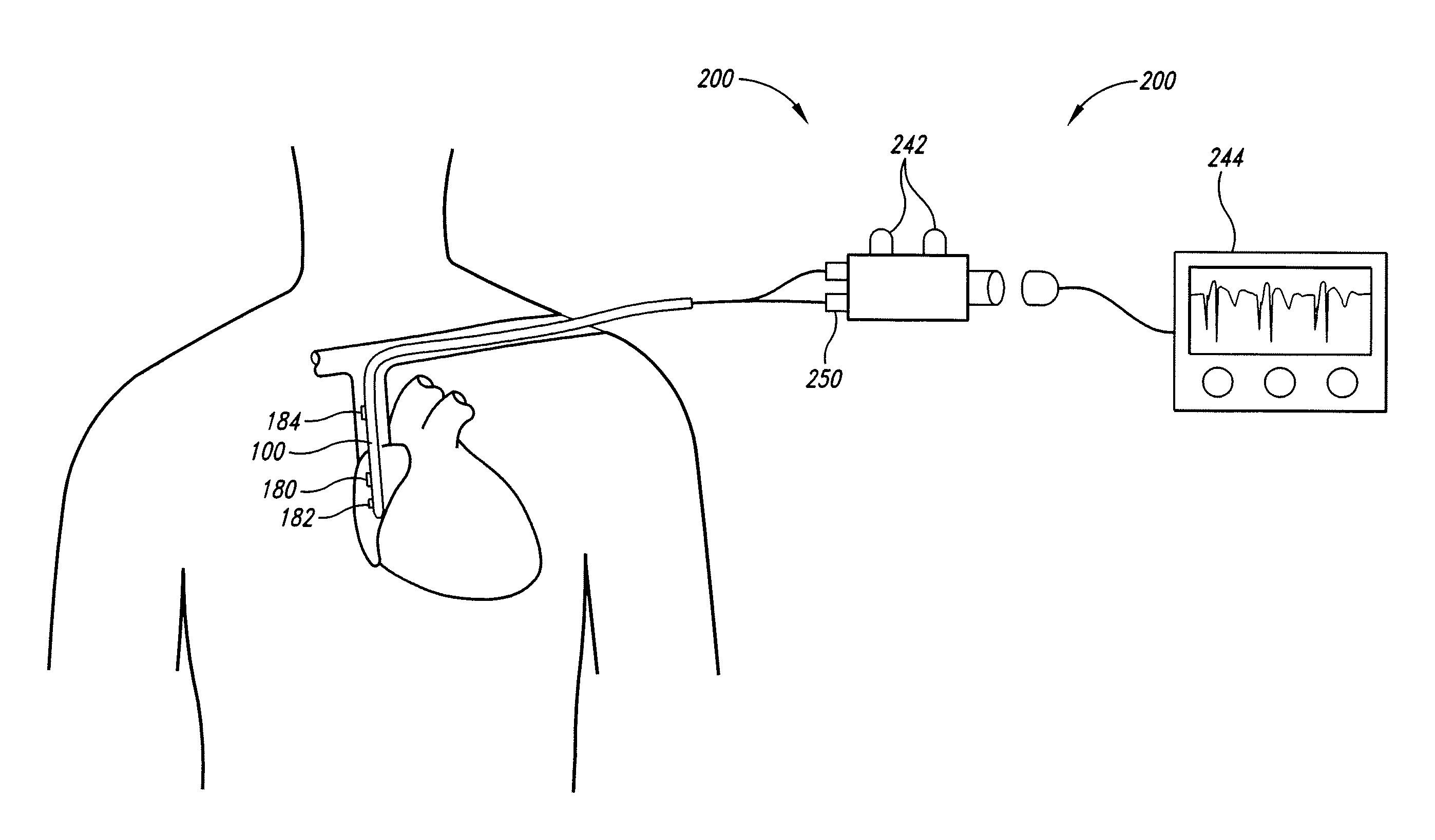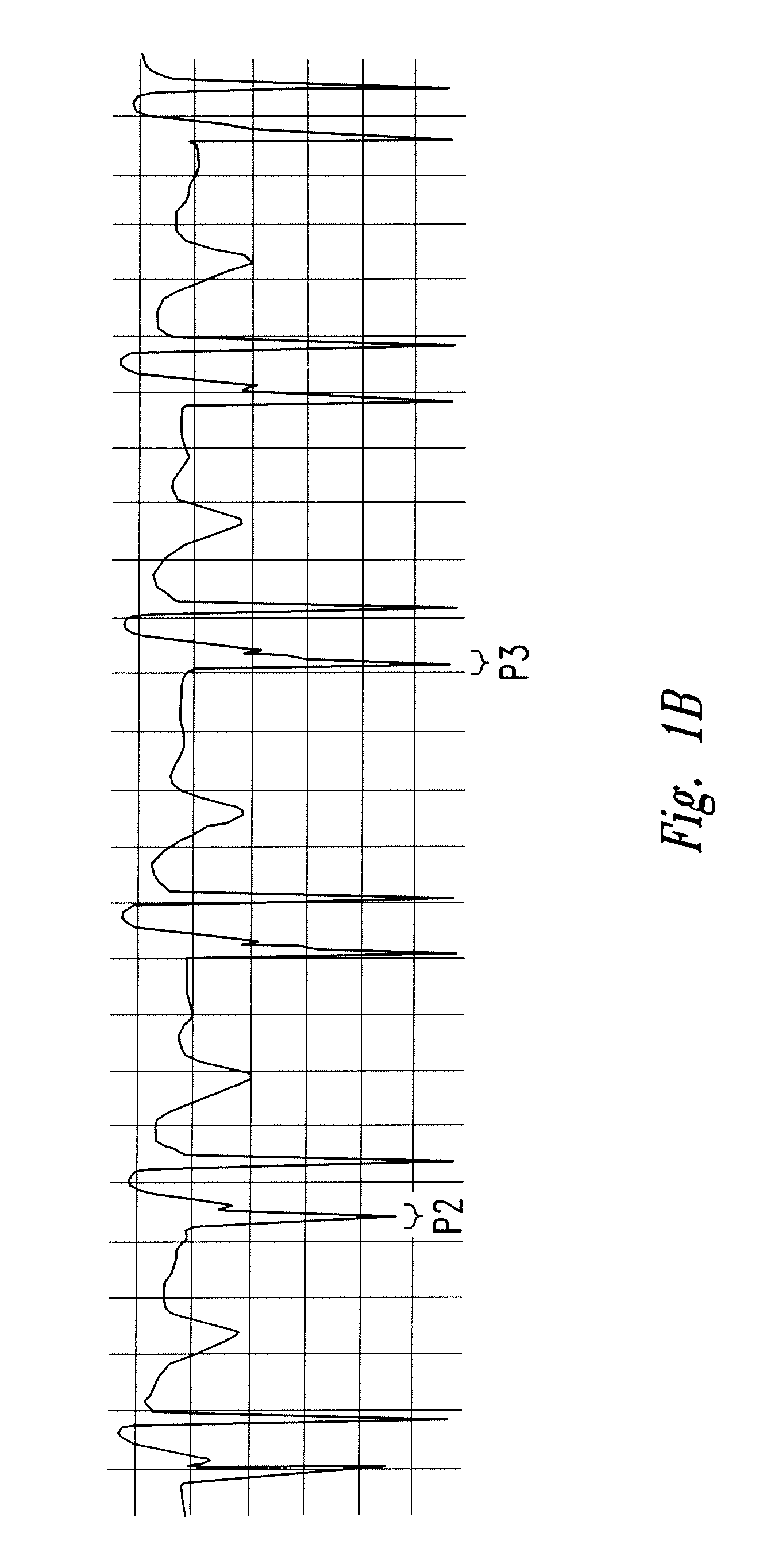Method of locating the tip of a central venous catheter
a catheter and venous catheter technology, applied in the field of devices for and methods of locating catheters inside the body, can solve the problems of increased risk of perforation of the right atrium, clot formation, arrhythmias, etc., and achieves the effect of improving the accuracy of cvc insertion, laborious and expensive chest x-rays, and improving the accuracy of insertion
- Summary
- Abstract
- Description
- Claims
- Application Information
AI Technical Summary
Benefits of technology
Problems solved by technology
Method used
Image
Examples
Embodiment Construction
[0034]Aspects of the present invention are directed toward a device for locating the tip of a CVC and a method of determining the location of the tip of a CVC. In the embodiment depicted in FIG. 3, the invention includes a CVC 100 constructed using any manner known in the art from a flexible nonconductive material, such as polyurethane or other suitable polymer material. It may also be desirable to use a radiopaque material. As is appreciated by those of ordinary skill in the art, the material used to construct the CVC 100 may include materials and / or coatings that provide improved anti-thrombotic or anti-bacterial properties. The CVC 100 has a body 130 configured to be received within a central vein. The body 130 may include a distal end 110 having a tapered tip 112 and a proximal end 120 spaced longitudinally along the body 130 from the distal end 110.
[0035]The body 130 may include one or more lumens 132 that traverse the length of the body and may have one or more openings 134 at...
PUM
 Login to View More
Login to View More Abstract
Description
Claims
Application Information
 Login to View More
Login to View More - R&D
- Intellectual Property
- Life Sciences
- Materials
- Tech Scout
- Unparalleled Data Quality
- Higher Quality Content
- 60% Fewer Hallucinations
Browse by: Latest US Patents, China's latest patents, Technical Efficacy Thesaurus, Application Domain, Technology Topic, Popular Technical Reports.
© 2025 PatSnap. All rights reserved.Legal|Privacy policy|Modern Slavery Act Transparency Statement|Sitemap|About US| Contact US: help@patsnap.com



